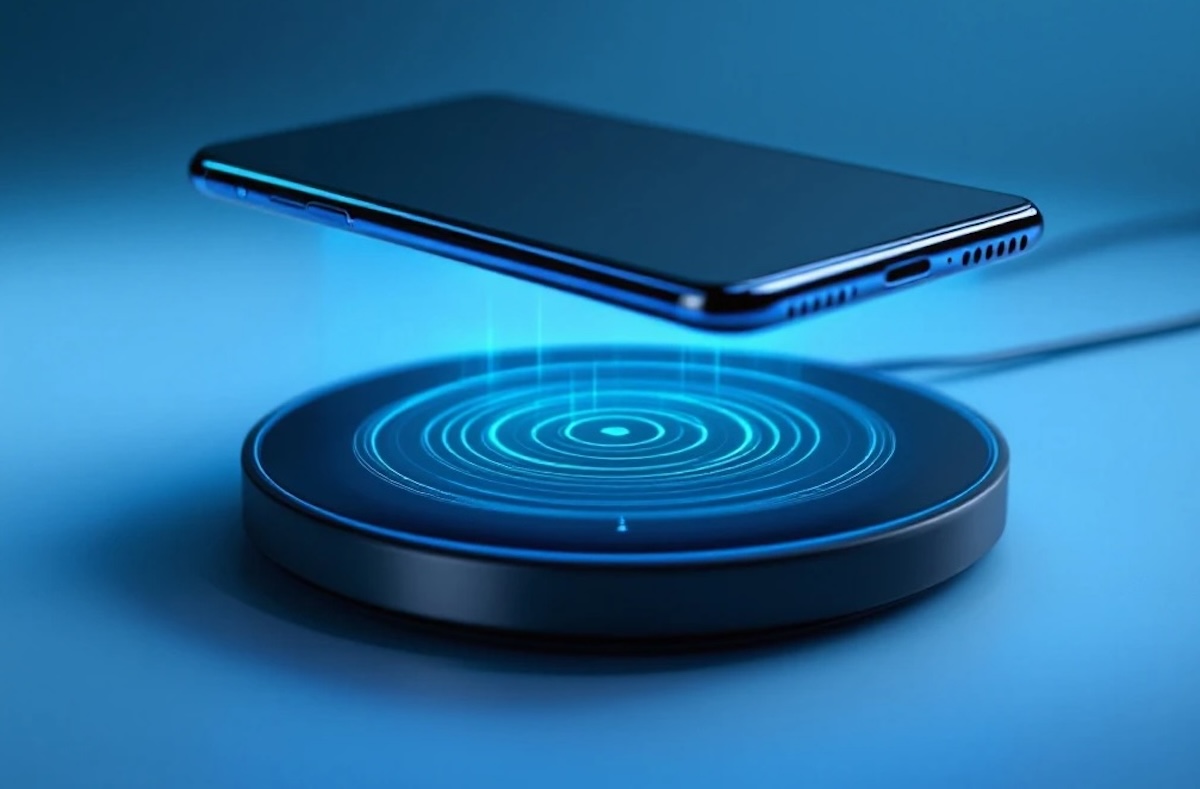Wireless charging explained: charging standards, real speeds, and best-practice tips

Wireless charging moves power from a charging pad to a device without a cable, using electromagnetic fields. In essence, a coil inside the pad produces a magnetic field that induces current in a matching coil inside the phone. Most modern smartphones support this convenient method, though real-world speeds vary by handset and charger specifications.
The physics in practice: two copper coils and a magnetic handshake
Wireless power transfer relies on electromagnetic induction between two coils:
-
The transmitter coil in the pad, once connected to power, creates an alternating magnetic field (typically 110–205 kHz).
-
The receiver coil in the phone intercepts that field and converts it into electrical energy, which is then rectified to DC to charge the battery.
Step-by-step flow:
-
The pad generates an alternating magnetic field (≈110–205 kHz).
-
The phone’s receiver coil couples to the field and captures energy.
-
The induced AC is converted to DC inside the device.
-
DC power charges the battery under battery-management control.
-
Precise coil alignment keeps transfer efficient and speeds consistent.
Modern systems add a control layer. Through tiny modulations of the magnetic field, the pad and phone communicate to negotiate power, monitor temperature, detect foreign objects, and stop charging when the battery is full.
Wireless charging Standards: Qi leads, MagSafe adds magnets, PMA fades
| Standard | Power Output | Key Features | Compatibility |
|---|---|---|---|
| Qi Wireless | 5–15W | Universal standard, WPC certification | Broad smartphone/accessory support across brands |
| MagSafe (Apple) | Up to 15W | Magnetic alignment; Qi-compatible | iPhone 12 and newer |
| PMA | 5–10W | Legacy alternative standard | Some older Samsung/legacy devices; largely discontinued |
Qi (from the Wireless Power Consortium) is the dominant global standard, ensuring cross-brand compatibility for phones and accessories on Android and iOS.
MagSafe builds on Qi by adding a ring of magnets for perfect alignment, helping iPhones reliably hit up to 15W and enabling magnetic add-ons like car mounts and battery packs.
PMA persists mostly in history: it appears on some older devices but is effectively sunset.
Speed vs. convenience: how wireless stacks up to a cable
Cables still win on outright speed, especially with modern fast-charging adapters. Wireless wins on everyday convenience—drop it down, pick it up, no ports or plugs.
| Charging Method | Power Range | Typical 0–100% Time | Approx. Battery per Hour |
|---|---|---|---|
| 5W Wireless | 5W | 5–6 hours | 10–15% |
| 15W Wireless | 15W | 3–4 hours | 25–35% |
| Wired Fast Charging | 25W–100W+ | 1–2 hours | 50–80% |
Samsung devices that support Fast Wireless Charging typically top out at 15W, though real-world rates depend on the phone, pad, alignment, and thermal conditions.
What most affects wireless speed:
-
Coil distance and alignment (even millimeters matter).
-
Case thickness/material (metal or very thick cases can hinder coupling).
-
Device temperature (heat triggers protective power reductions).
-
Background activity and screen-on time during charging.
-
Pad quality and certification, plus power adapter capability.
Safety and battery health: separating facts from myths
When correctly implemented, wireless charging is no worse for battery longevity than wired. Phones and pads use the same battery-management logic to prevent overcharge and manage temperature.
Built-in safeguards include:
-
Thermal controls that slow charging as temperatures rise.
-
Foreign Object Detection (FOD) to avoid heating stray metal.
-
Auto-stop at full capacity with trickle-free maintenance.
-
Field strength regulation within established safety limits.
-
BMS parity with wired charging for controlled cycle management.
Common concerns—like “wireless charging cooks batteries” or “fields are unsafe”—are unfounded at consumer power levels and within certified products. Heat is the real enemy of battery health, which is why pads and phones actively manage it.
Wireless charging: setup, and optimization
Most smartphones from 2018 onward (Samsung Galaxy, iPhone, and many Android models) support Qi. To begin:
Essential checklist
-
A Qi-compatible smartphone (verify in device specs).
-
A certified Qi charging pad (5–15W recommended for most users).
-
A suitable power adapter that meets the pad’s input requirements.
-
A thin case (or remove a thick/metal case during charging).
-
A clean, flat surface to keep the phone stable and centered.
Optimization tips
-
Center the phone on the pad for best alignment (MagSafe does this automatically on supported iPhones).
-
Remove thick/metal accessories (rings, plates, kickstands) that disrupt coupling.
-
Keep keys, cards, and coins away from the pad.
-
Watch the pad’s LED indicators for confirmation and error states.
-
Clean the charging surfaces periodically to improve contact and reduce slip.
Troubleshooting
-
Reposition the device to improve alignment.
-
Test without the case if charging is slow or intermittent.
-
Confirm the pad’s power adapter meets the output spec.
-
Restart the phone if charging controls appear stuck.
-
Wipe both surfaces to remove dust or residue.




